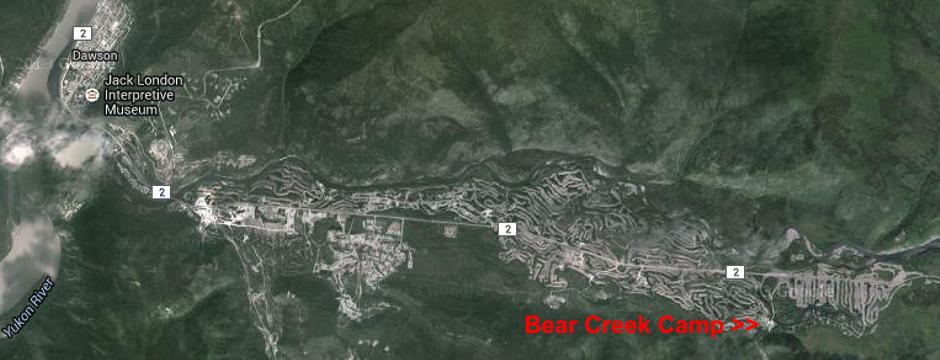
This satellite view shows Dawson City and the Bear Creek Camp. Notice all of the tailing piles from dredging
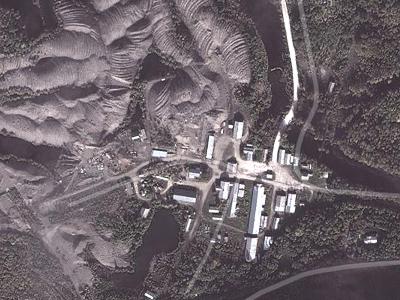
Satellite view of Bear Creek Camp and dredge tailings
Parks Canada acquired the complex in 1975. When I visited in 1998 the Bear Creek Gold Camp (AKA Bear Creek Compound) was open to the public and I took the Parks Canada tour.
In about 2003 it was closed to the public while they figure out how to clean up old mining contamination. One of the biggest hazards is the mercury that was used in the gold extraction process.
When it was open to the public, one could walk through Bear Creek and wonder at the abandoned houses, workshops and machinery that once completely sustained hundreds of miners and their families.
It was opened briefly in 2010 - pictures here and again in 2016 - A tremendous set of pictures at this site: Bear Creek Gold Camp 2016
In 2018 Parks Canada openned the site for limited tours on a daily basis as listed here.
Following the discovery of gold at Bonanza Creek at the turn of the 20th century, the Klondike region saw an explosion of towns and cities devoted to the turning of the earth in search of precious minerals. Bear Creek Compound, located just outside Dawson City limits, is one of these mining sites, which today, as so many others like it in the Yukon, sits a ghost town.
Bear Creek is an industrial complex of some 65 buildings and related structures located in the Klondike River Valley, 10 kilometers east of Dawson City. From 1905 to 1966, Bear Creek was the Klondike headquarters for corporate mining interests, acting as the administrative and repair center for the goldfield's dredging operations.
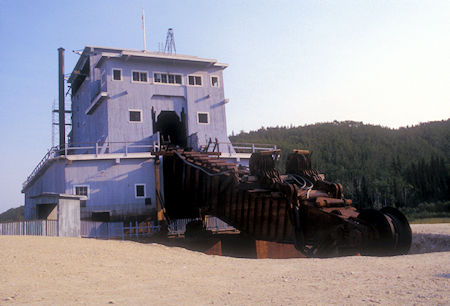
Gold Dredge #4
These huge dredges worked the goldfields, replacing the small individual miner of the gold rush and ensuring the viability of gold mining as a profitable business up until 1966. Gold Dredge #4 is a good example.
The majority of the buildings are in some stage of decay, mostly advanced, and many have artifacts left in situ, as though time has stood still.
Operating from the 1890s until 1969, Bear Creek had it all. Water, brought to location by canal, provided electricity with the help of an enormous steam generator. Gardens and farm animals were harvested and stored in multiple buildings that brought the many families through the long, harsh winters.
While horses played an important role in camp life and exploration efforts, machines equally dominated existence. Bear Creek boasted the largest, most modern machine shop in North America, an honor held all the way into the 1960s.
These machines, some of which were invented at Bear Creek and are now in use all over the world, worked to change the entire landscape of the area. Every part of these great creations could be manufactured in Bear Creek.
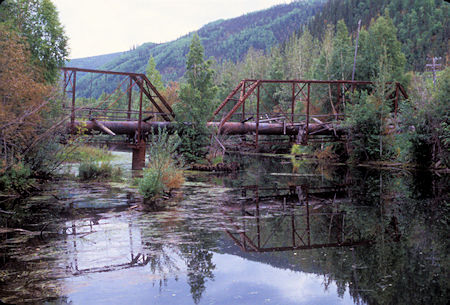
Bridge that carried water via pipeline to Bear Creek Camp - 1998
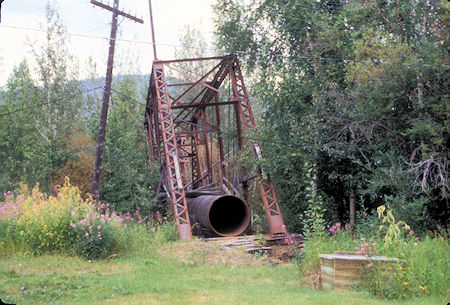
Remains of pipeline at Bear Creek Camp - 1998
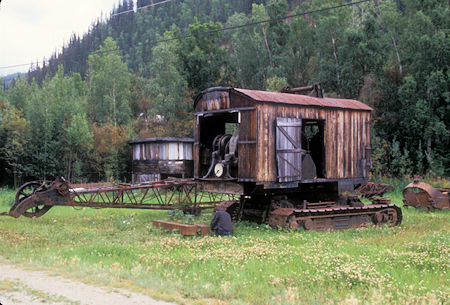
Drag line machine at Bear Creek Camp - 1998
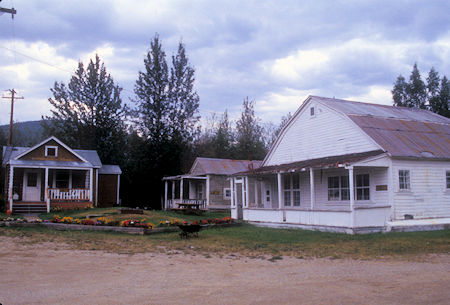
Boyle House (right) at Bear Creek Camp - 1998
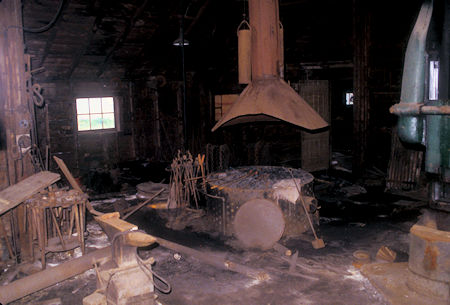
Blacksmith at Bear Creek Camp - 1998
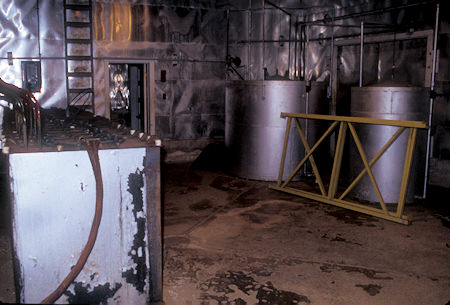
Battery facility at Bear Creek Camp - 1998
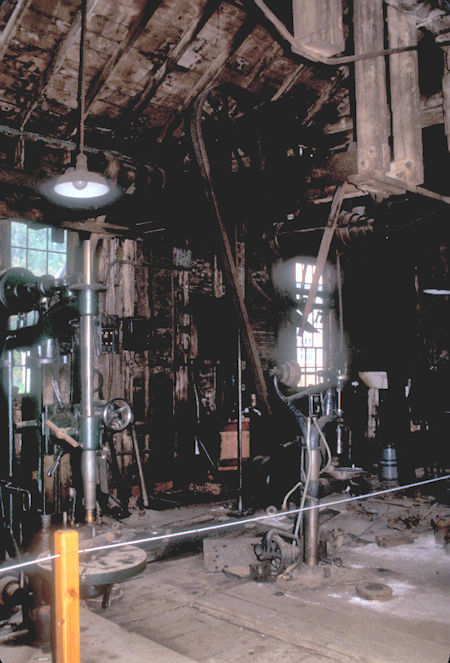
Ten ton hoist at Bear Creek Camp - 1998
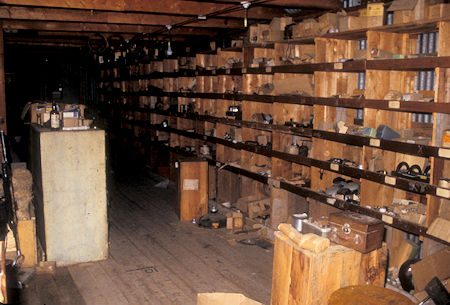
Parts bins at Bear Creek Camp - 1998
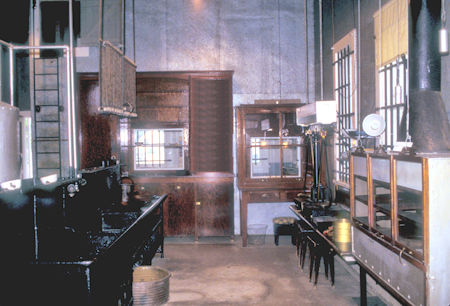
Kitchen at Bear Creek Camp - 1998
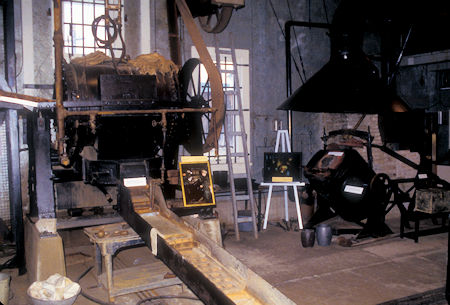
Gold recovery room at Bear Creek Camp - 1998
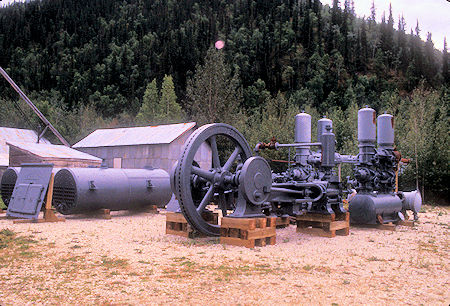
Machinery at Bear Creek Camp - 1998